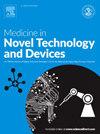揭示翻译后修饰在骨代谢中的作用:对骨质疏松症的影响
Q3 Medicine
引用次数: 0
摘要
骨代谢是一个高度动态的过程,由成骨细胞、破骨细胞和骨细胞调节,通过持续的重塑来确保骨骼的完整性。这种平衡的破坏会导致骨质疏松症,这是一种以骨量减少和骨折风险增加为特征的衰弱状态。新兴研究强调了翻译后修饰(PTMs)在调节骨细胞活性、影响蛋白质稳定性、功能和信号通路中的关键作用。关键的PTMs,包括磷酸化、糖基化、乙酰化、泛素化和sumo化,控制成骨细胞分化、破骨细胞活性和细胞外基质组织。这些修饰的失调与骨质疏松的发病机制有关,使它们成为有希望的治疗靶点。RUNX2是一种主要的成骨转录因子,受PTMs的广泛调控,影响其在骨骼发育中的活性。同样,细胞外基质蛋白和骨细胞衍生因子,如硬化蛋白和成纤维细胞生长因子23,也会经历影响骨稳态的PTMs。蛋白质组学和分子生物学的进步促进了ptm介导机制的鉴定,为靶向治疗铺平了道路,包括激酶抑制剂、组蛋白去乙酰化酶调节剂和泛素化调节剂。本文综述了PTMs在骨代谢中的作用机制,它们在骨质疏松症中的失调,以及潜在的治疗干预措施,为骨骼健康保护和骨质疏松症治疗提供新的策略。本文章由计算机程序翻译,如有差异,请以英文原文为准。
Unveiling the role of post-translational modifications in bone metabolism: implications for osteoporosis
Bone metabolism is a highly dynamic process regulated by osteoblasts, osteoclasts, and osteocytes, ensuring skeletal integrity through continuous remodeling. Disruptions in this balance contribute to osteoporosis, a debilitating condition characterized by reduced bone mass and increased fracture risk. Emerging research highlights the pivotal role of post-translational modifications (PTMs) in regulating bone cell activity, influencing protein stability, function, and signaling pathways. Key PTMs, including phosphorylation, glycosylation, acetylation, ubiquitination, and SUMOylation, govern osteoblast differentiation, osteoclast activity, and extracellular matrix organization. Dysregulation of these modifications has been linked to osteoporosis pathogenesis, making them promising therapeutic targets. RUNX2, a master osteogenic transcription factor, is extensively regulated by PTMs, affecting its activity in skeletal development. Similarly, extracellular matrix proteins and osteocyte-derived factors, such as sclerostin and fibroblast growth factor 23, undergo PTMs that influence bone homeostasis. Advances in proteomics and molecular biology have facilitated the identification of PTM-mediated mechanisms, paving the way for targeted therapies, including kinase inhibitors, histone deacetylase modulators, and ubiquitination regulators. This review explores the mechanistic contributions of PTMs in bone metabolism, their dysregulation in osteoporosis, and potential therapeutic interventions, offering insights into novel strategies for bone health preservation and osteoporosis treatment.
求助全文
通过发布文献求助,成功后即可免费获取论文全文。
去求助
来源期刊

Medicine in Novel Technology and Devices
Medicine-Medicine (miscellaneous)
CiteScore
3.00
自引率
0.00%
发文量
74
审稿时长
64 days
 求助内容:
求助内容: 应助结果提醒方式:
应助结果提醒方式:


